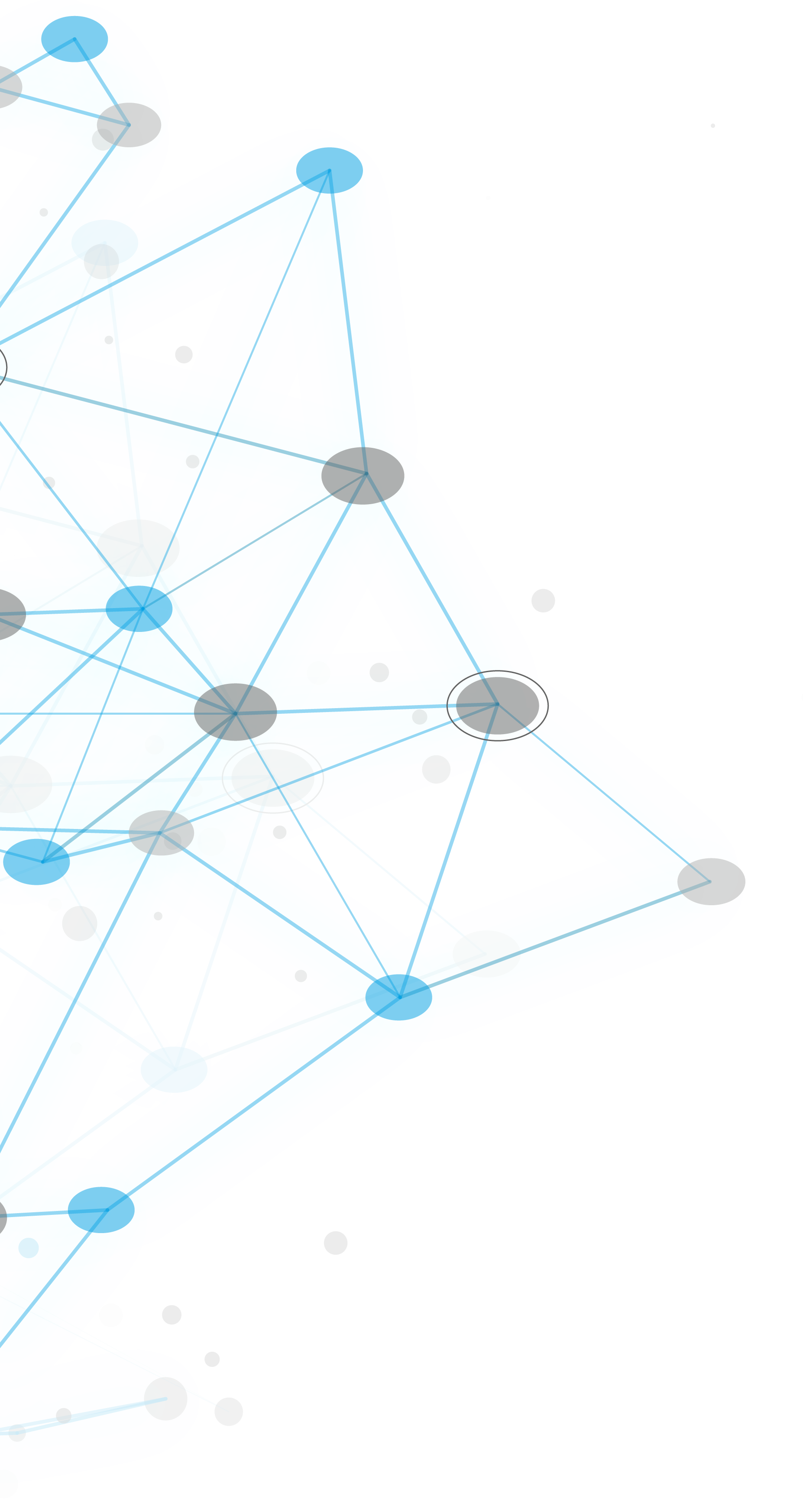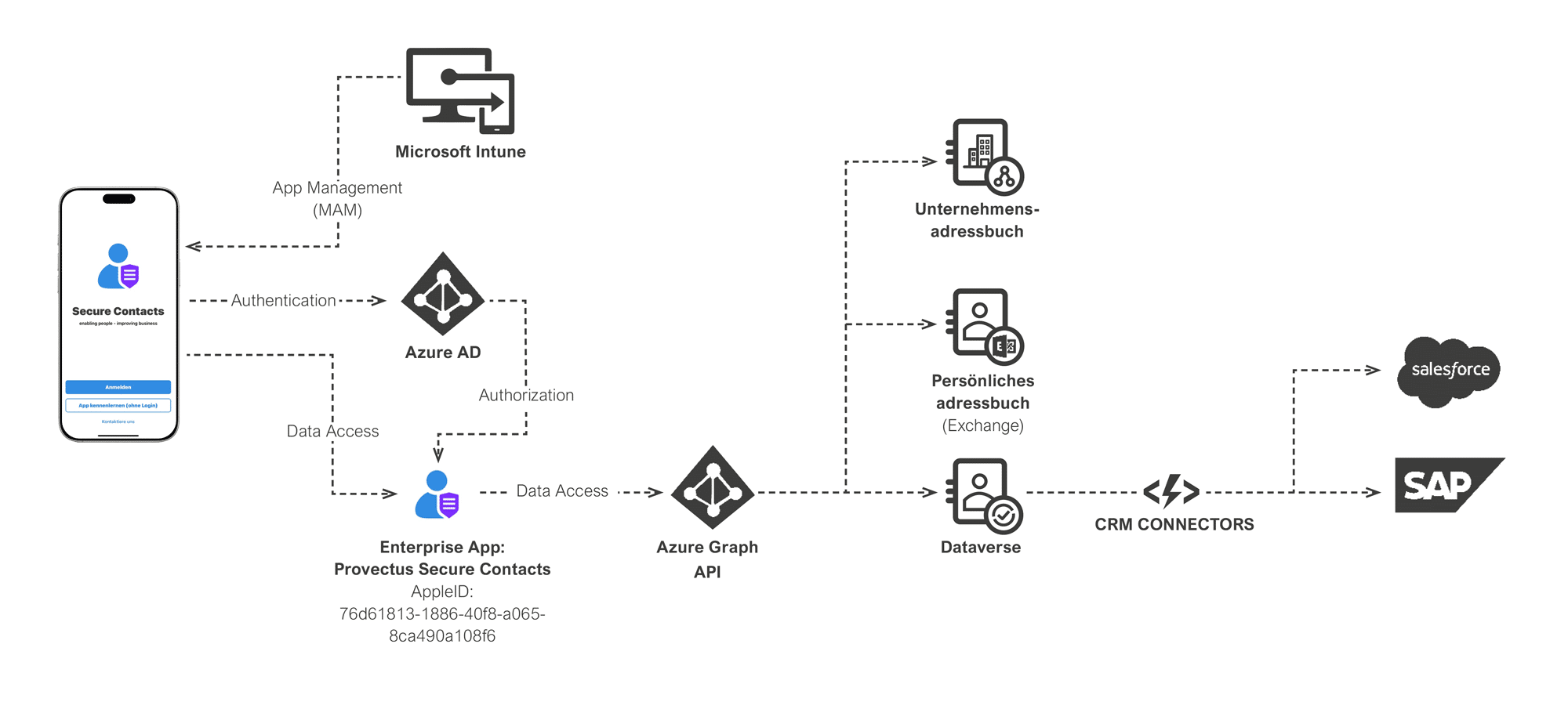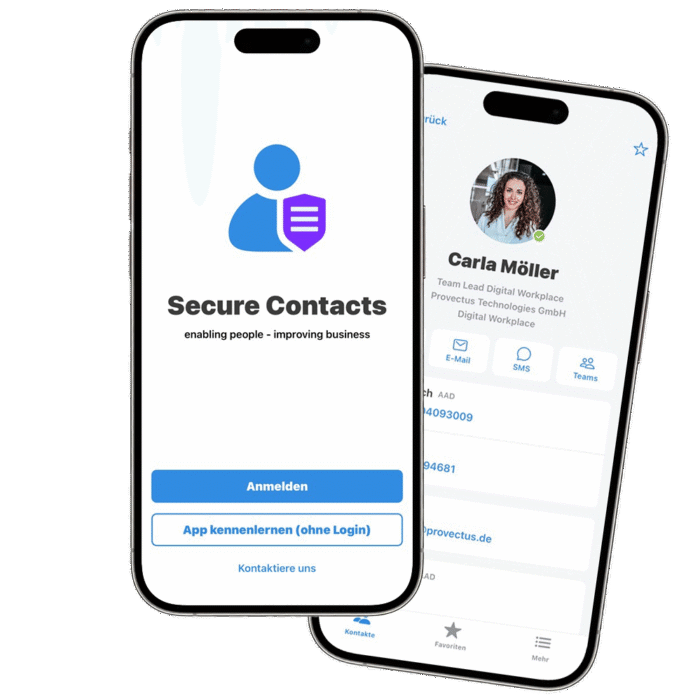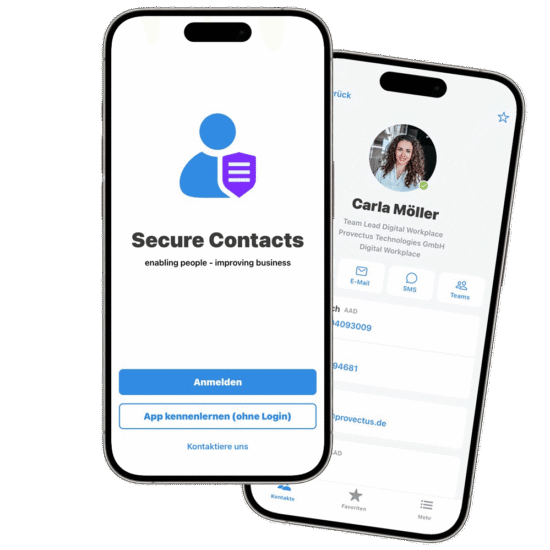Data sources
The Secure Contacts App is a cloud-native application, meaning it receives all contact information from your Azure tenant. Primary data sources are Azure Active Directory (AAD) and the Global Address List (GAL). In addition, the app receives contact information from the user’s personal Outlook contacts (APC, Exchange Online only). As of Version 3, these Outlook contacts can be created, edited, and deleted directly in the app. Contacts can also be added via QR codes or vCards, including support for multiple vCards. Optional data sources include Dynamics 365 (D365), MS Dataverse (DVRS), and Azure Blob Storage (ABS), which require additional configuration in the customer’s Azure tenant.
App data in transit
The app communicates only with the MS Azure Cloud, which means primarily with the Graph API and Azure Authentication Endpoint, and optionally with Azure Blob Storage and Azure Dataverse. All API calls or transactions are made via HTTPS with Transport Layer Security (TLS). After the SSL handshake, the Secure Contacts app and Azure API endpoints use the strongest encryption algorithm available on both sides. The app does not collect telemetry data in the process, nor does it connect to any endpoints other than the MS Azure Cloud.
App data at rest
The Secure Contacts app stores all data in a SQLite database with AES-256 encryption. The cryptography key is randomly generated using Microsoft’s RNGCryptoServiceProvider when the app is first launched. It is then securely stored in the device’s local iOS key chain. The app container itself is secured by MS Intune app protection. As a result, neither another app nor the operating system itself can view or modify the stored data.









